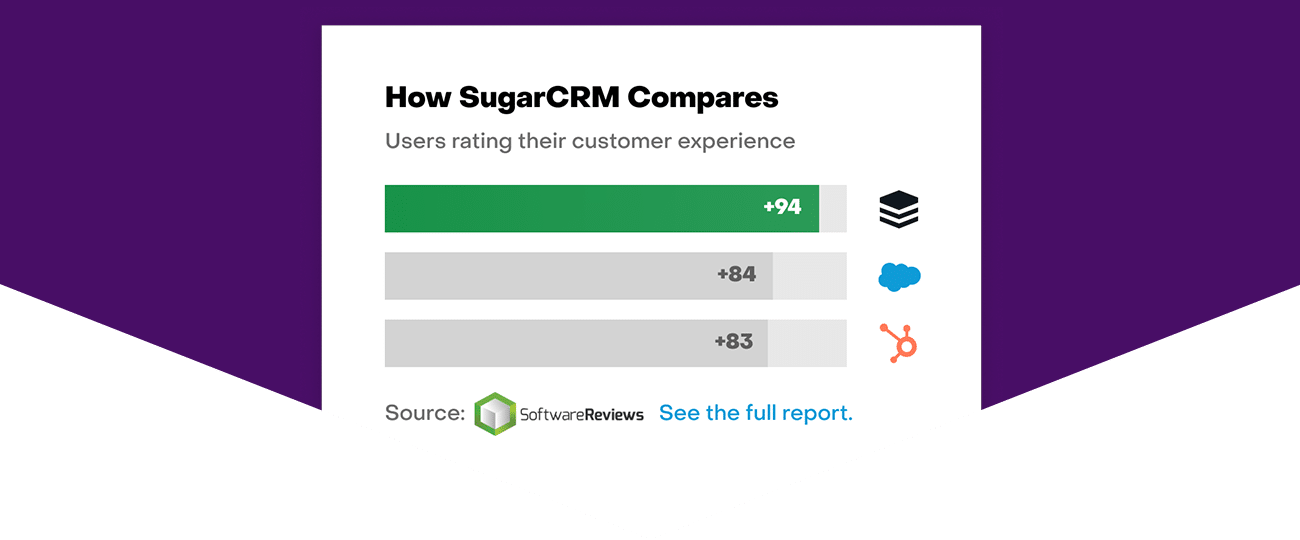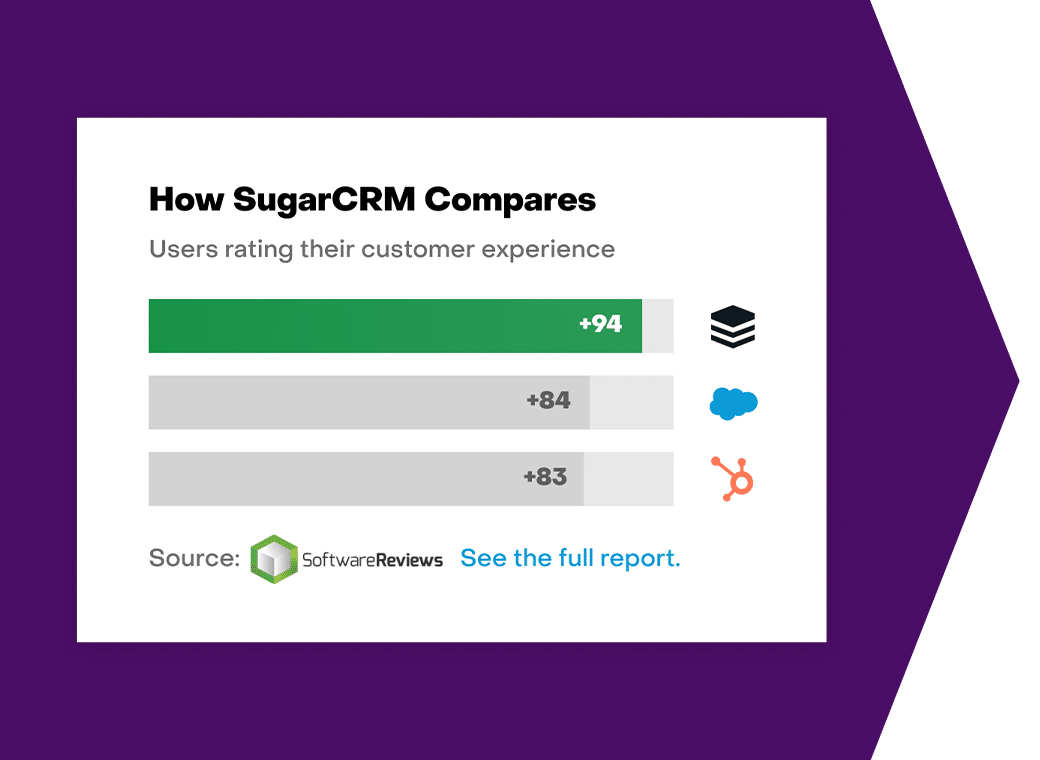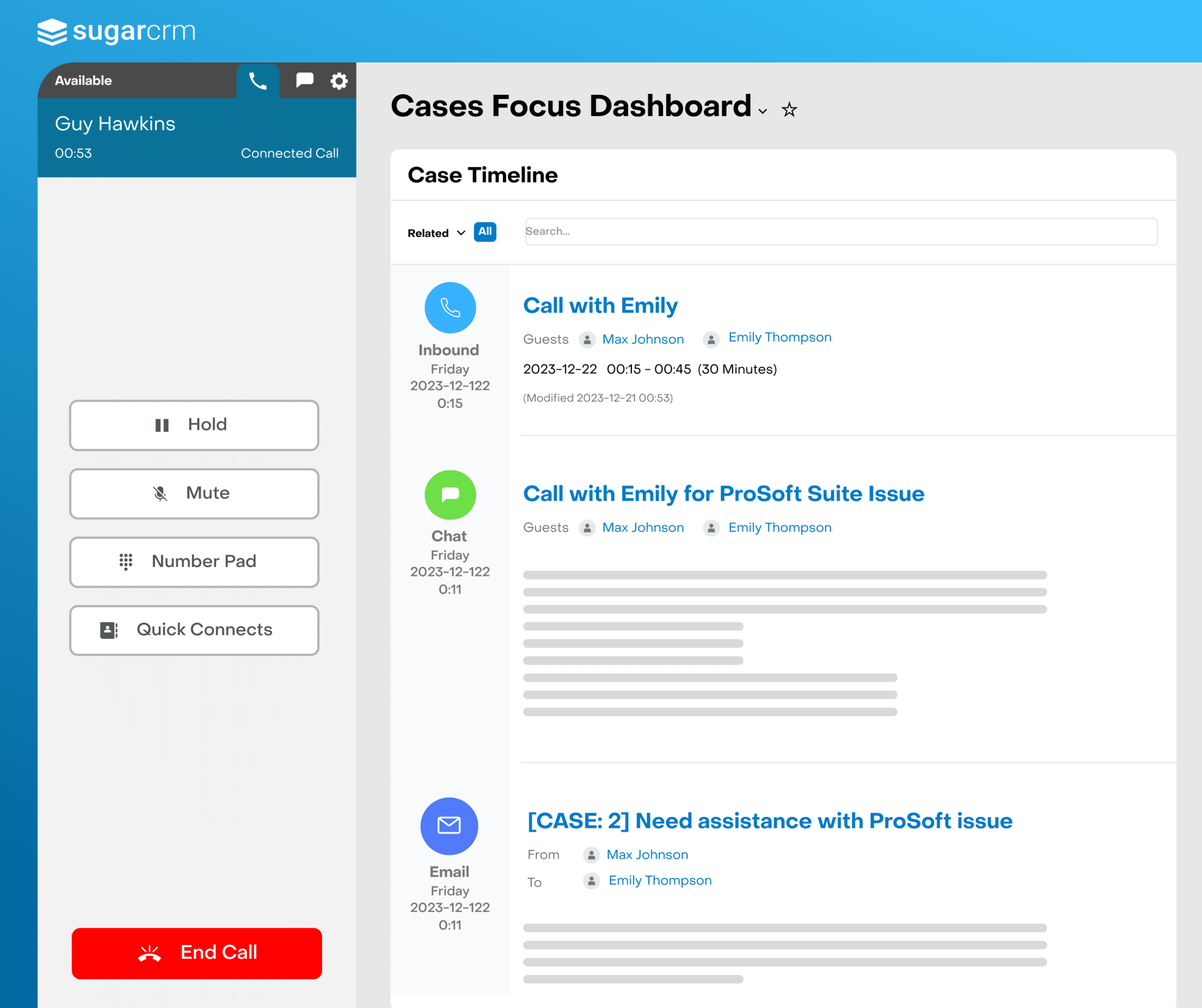What Does Modern Configuration for CRM Look Like?
In the past, customizing CRM apps required extensive development, which often led to increased costs, longer implementation times, and difficulties with maintenance. Modern CRMs offer powerful configuration tools that allow businesses to adapt their system to their specific needs quickly and easily. This shift towards no-code and low-code configuration gives non-technical users the ability to tailor the CRM to their processes and goals, without going too far towards customization and coding. Modern CRM configuration enables personalization without the weight of over customization enabling companies to leverage technology while embracing the things that make their businesses unique and special.
What we'll Cover:
CRM Configuration: CRM Flexibility Without Coding
Here are eight key areas where CRM configuration and no-code tools can make a significant impact:
1. Custom Fields and Layouts
Every business has its unique data requirements, and with CRM configuration tools, it’s easy to set up custom fields, forms, and layouts that match your business and support your processes. There’s no need to write any code—users can simply drag and drop new fields, adjust forms, or rearrange layouts to capture the exact information they need. This flexibility allows businesses to structure their CRM data in a way that reflects their industry and processes.
A manufacturing company might configure SugarCRM to add custom fields for product types, technical configuration, or production schedule, all without having to hire a developer. Sales reps will only see the information relevant to their roles, making the CRM more intuitive and efficient to use.
2. Role-Based Access and User Permissions
A second critical aspect of CRM configuration is access and visibility. SugarCRM allows businesses to control who can access certain data, features, and reports based on their role within the organization. This ensures that the right people have access to the information they need, while sensitive data remains protected.
In manufacturing enterprises, administrators can configure Sugar in a way that managers have access to detailed sales forecasts, while individual sales reps only see their own accounts. This can be done easily through the platform’s settings, without needing to alter the underlying codebase.
3. Workflow Automation and Task Management
CRM platforms like Sugar enable businesses to automate workflows through simple configuration settings. This means that instead of building complex custom workflows from scratch, users can define rules and conditions for automating tasks such as lead assignments, follow-up reminders, or approval processes. A powerful BPM engine lets you visually define rules that support your business, streamline operations, and ensure nothing falls through the cracks.
Marketing can configure Sugar to automatically assign leads to sales reps based on criteria such as location or engagement level. Once a lead reaches a certain score, the system triggers a task for the sales team to reach out. This happens without manual intervention or custom code required.
4. Activity Capture and Communication Tracking
A key feature of CRM configuration is the ability to automatically capture and track customer interactions in real-time, providing a comprehensive view of customer engagement. In SugarCRM, tools like SugarLive and Sugar Connect enable users to seamlessly integrate communication data such as emails, calls, and meetings directly into the CRM. Activity capture ensures that customer interactions are logged automatically, reducing, and eliminating manual entry while also improving data accuracy.
5. Dashboards and Reporting
One of the most powerful aspects of CRM configuration is the ability to configure dashboards that display real-time data in a visual, easy-to-understand format. Dashboards in SugarCRM can be tailored to show key performance indicators (KPIs), sales pipelines, customer engagement, and more, all configurable by the end user.
Flexible dashboards allow every user to see the information most relevant to their role. A sales manager can track team performance, while a customer support agent can focus on response times or ticket resolution rates.
A SaaS company might configure its CRM dashboard to display the number of leads in each stage of the sales funnel, along with real-time revenue forecasts. A distribution company might care more about current inventory and fulfilment. By adjusting these settings in the dashboard configuration, sales teams can keep track of their goals and quickly identify bottlenecks in the process—all without needing IT support.
6. Advanced Reporting and Analytics
The loop between analyzing and taking action is intentionally very short in Sugar. You can easily slice and dice information about customer interactions, and trends without requiring complex SQL database queries or custom report generation. You can easily navigate from an executive overview to all of the rich details behind it.
Companies in manufacturing, for example might leverage sales performance reports that break down revenue by product category, industry, region, or sales rep. These reports can be scheduled to automatically generate and distribute to key stakeholders at regular intervals.
7. Actionable AI Insight
Sugar provides deep intelligence capabilities woven directly into the platform. Predictive, sentiment, and generative AI are foundational pieces of our Intelligence capabilities. SugarCRM is constantly working on your behalf to find value behind the data surfacing insight to your employees.
Anyone in the business can access an easy to read and up to date summary of a case or opportunity. Sugar analyzes the available information to identify the competition, recommend next actions, and identify and surface risks or opportunities.
8. Sales Intelligence Integration
Modern CRMs, such as SugarCRM, are further enhanced with integrated sales intelligence features, which provide businesses with real-time data about prospects, clients, and competitors. These tools, like recent acquisition company sales-i, pull in ERP data to help sales teams refine their outreach strategies and stay ahead of the competition.
Sales intelligence tools within SugarCRM enable businesses to track lead behavior and market shifts, providing valuable insights that can influence deal strategies. By integrating sales intelligence into your CRM, your team can make more informed decisions, react to changes faster, and maintain a competitive edge.
No-Code Tools in SugarCRM: Empowering End Users
The rise of no-code tools in platforms like SugarCRM has been a game-changer for businesses, allowing them to make real-time changes to their CRM systems without relying on developers. No-code solutions provide drag-and-drop interfaces, simple rule builders, and visual tools that make it easy for anyone, regardless of their technical knowledge levels, to configure the system.
Here are some key no-code tools available in Sugar:
1. No-Code Workflow Automation with SugarBPM
Sugar’s SugarBPM is a no-code tool that enables users to create and automate workflows based on specific triggers and conditions. With SugarBPM, users can define automation rules for processes such as sending follow-up emails, assigning tasks, or escalating cases—all with a simple visual interface.
A business can leverage SugarBPM’s easy configuration features to automatically send a welcome email to new customers after they complete a purchase. The workflow can be set up to trigger after the customer’s status changes, ensuring that every new customer receives timely communication.
2. Report Builders
Instead of writing custom scripts or SQL queries, Sugar’s report builder allows users to create complex reports through an intuitive, drag-and-drop interface. Business users can define the fields, filters, and groupings they need to generate actionable insights. This makes reporting accessible to everyone, not just data analysts or developers.
For instance, a sales manager can use the report builder to analyze the win-loss rate of opportunities based on industry or region, and then share the report with the team to refine their sales strategies. This can all be done within minutes using no-code tools.
3. Sugar Studio for Configuration
Sugar Studio is a no-code tool in Sugar that allows users to configure and customize their CRM environment. With Sugar Studio, businesses can modify fields, relationships, layouts, and modules with a simple, drag-and-drop interface. It’s designed for administrators to create a tailored CRM experience without needing to write or alter code.
HR teams might use Sugar Studio to add an object for managing job applicants, including fields for interview status, candidate background, and position applied for. This object can be fully configured in minutes using the visual interface.
4. Easy Integration with No-Code Connectors
In addition to internal configuration, Sugar offers no-code integration connectors that make it easy to connect external tools like LinkedIn Sales Navigator, ZoomInfo, and others. These integrations enrich the CRM with additional data and insights, all configurable through simple setup wizards or drag-and-drop mapping tools.
By using SugarCRM’s no-code connector for LinkedIn Sales Navigator, sales reps can automatically pull in data about prospects’ career moves, company news, and professional connections directly into their CRM, improving outreach strategies without custom development.
5. AI at the Core
SugarCRM offers a CIO approved trust layer allowing businesses to consume technology like AI while remaining compliant and in control of their data. The trust layer is a comprehensive five-step process designed to ensure safe, reliable, and transparent AI interactions within the CRM environment.
This process begins with grounding, where AI queries are anchored in relevant and factual CRM data to provide accurate responses. Next, sensitive information is masked, protecting critical data from exposure during AI processing. AI requests are then routed through an LLM (Large Language Model) Proxy to control the scope of the model’s access. Responses undergo screening to detect and filter out inappropriate or inaccurate information. Finally, an audit trail is maintained allowing administrators to review and track AI activity for compliance and security purposes.
Wrapping It Up
In today’s business environment, the ability to configure your CRM system without relying on custom development is a major advantage. Platforms like SugarCRM offer powerful no-code tools that enable businesses to tailor their CRM to their specific processes and needs, all while integrating real-time sales intelligence.
With tools like SugarBPM, Sugar Studio, and report builders, businesses can automate workflows, customize data fields, and generate insights, everything without writing a single line of code. This allows organizations to stay agile, adapt quickly to changing market conditions, and empower teams to be more productive and data driven, while keeping costs and complexity low.




